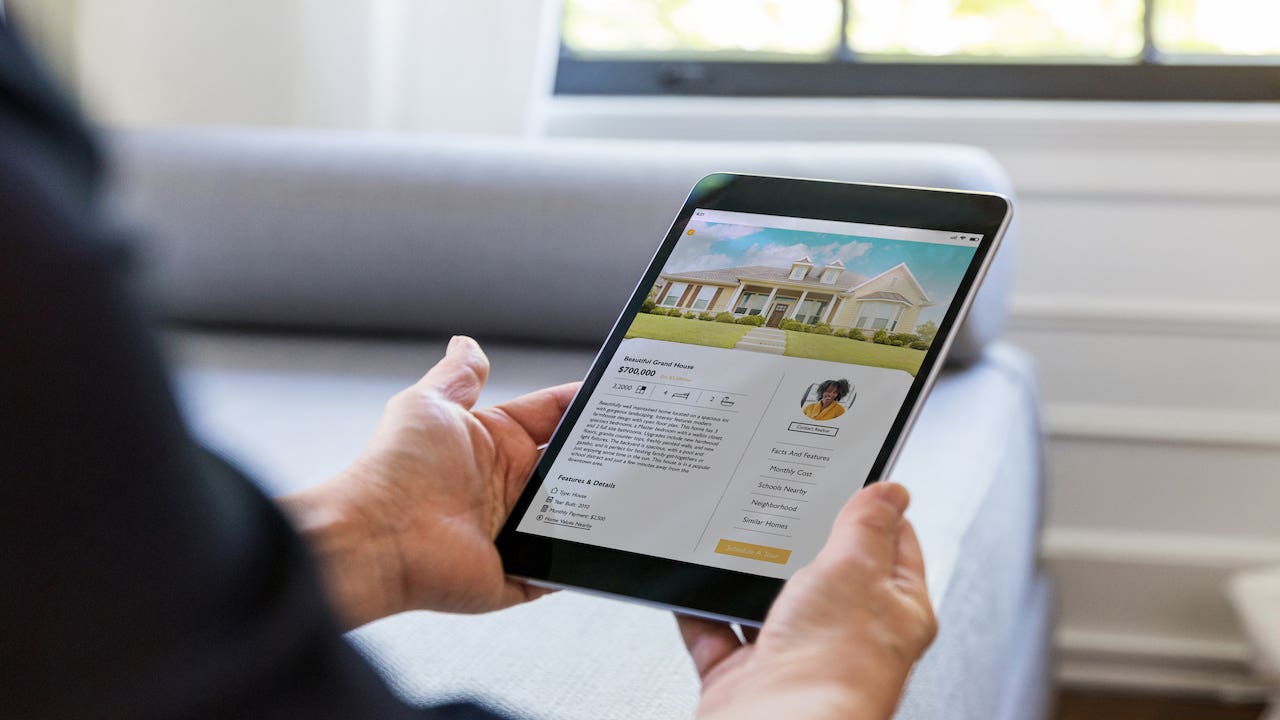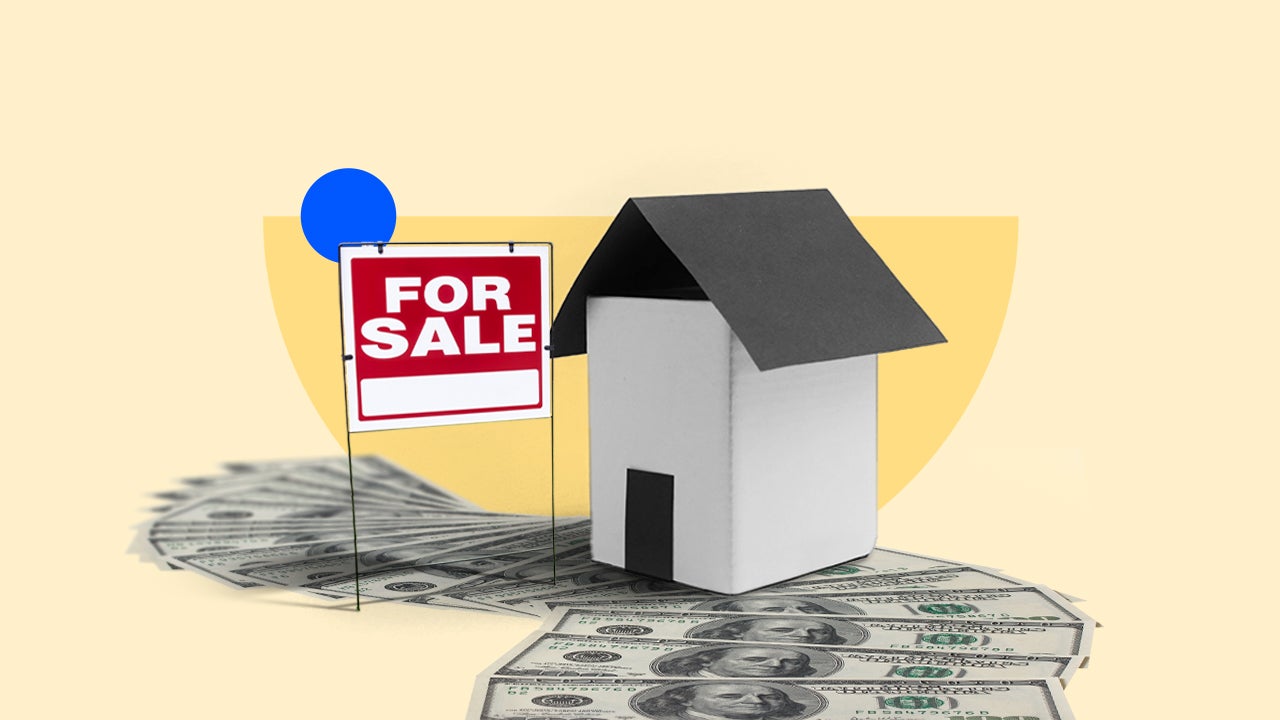How to sell your house online

Once upon a time, home sellers relied on print ads and “for sale” signs to spread the word about their property. But the internet has changed all that.
The advertising and marketing aspect of home selling has been somewhat digital for a while, what with multiple listing services (MLS) — which professional agents peruse — and popular real estate marketplace sites like Zillow. Email ads and solicitations are also common. But thanks to advances in technology, the entire real estate transaction now can be done exclusively online, from initial listing to final closing.
If you’re interested in selling your home digitally, here’s what you need to know and how to go about it, whether you are using a real estate agent or doing it all on your own.
The online home selling experience
If you list your home for sale, chances are it’ll appear online on your broker or agent’s company website, as well as on the MLS and popular real estate listings platforms. This can help you reach a wide array of prospective buyers — especially since they’re looking online, via real estate apps and sites.
According to the National Association of Realtors’ 2021 Profile of Home Buyers and Sellers, an estimated 95 percent of homebuyers used the internet to find properties, with 41 percent starting the buying process by viewing online listings. Virtual home tours are also on the rise, with Redfin reporting that 63 percent of buyers made an offer on a home sight unseen in 2020. Additionally, buyers and sellers no longer need to be present at the closing table, as virtual closings are an option in 44 U.S. states.
Ways to sell a home online
There are several different ways to sell a home online, including:
- Sell to an instant buyer (iBuyer): An iBuyer is a company that purchases homes online directly from private sellers with the goal to resell the home at a profit. These companies rely on computer algorithms to determine home prices, and they can make an offer quickly and save you the hassle of listing, marketing and showing your home. However, iBuyers aren’t available in all regions, and they typically charge service fees of around 5 percent.
- Sell with a real estate agent: Selling with a real estate agent who lists your home online is another option. Generally, real estate agents charge commissions of 5 to 6 percent of your home’s sale price. But they list, market, schedule showings and handle paperwork on your behalf, which is a huge timesaver.
- Sell it yourself: Listing your home online on your own as a “for sale by owner“(FSBO) property is another option, which could help you save money on real estate commissions. However, you’ll also need to design the listing, market your home, manage showings and handle all the paperwork.
The internet has made doing-it-yourself more tempting in many ways, but it may not be as easy as it looks, many real estate pros warn. “Marketing is limited,” says Jon Sanborn, a licensed San Diego Realtor and co-owner of SD House Guys. “Some of the best real estate marketing technology includes the MLS, which isn’t available to the average home seller who doesn’t go through an agent. Selling on your own is quite time-consuming, and the average homeowner turned home seller doesn’t have the market knowledge a real estate agent typically does.”
How to sell your home online
Depending on the selling option you choose the process of selling your home online could include the following steps. If you opt to sell to an iBuyer, you most likely won’t need to list or schedule showings, though you will need to complete paperwork and may need to help facilitate things like a home inspection.
- Create a listing: Generally, one of the things a seller’s real estate agent does is write the listing for you, take photographs of your home and add your property to the MLS. They may even help you with staging your home — either literally or digitally — so it’s as appealing as it can be for prospective buyers. If you opt to sell on your own, you’ll be responsible for doing those things and finding an FSBO service to list your property online. Your home will not be added to an MLS if you opt to sell it independently.
- Schedule virtual tours: If you’d like your entire home selling process to take place online, your real estate agent can schedule virtual tours of your property with buyers (a procedure that became particularly popular during the pandemic). They’ll also handle the scheduling of in-person walkthroughs if you opt to have those. Those who list their home as FSBO will need to hold open houses or schedule visits on their own — or the virtual tour, tablet in hand.
- Complete paperwork: Bids and offers are typically emailed these days (some people even text, though most pros recommend things be a bit more formal). The hammering out and signing of the purchase and sale agreement can be done online, through eSign services like DocuSign. Earnest money can be deposited directly to escrow accounts — either the traditional wiring, or via transfer services like Zelle or PayPal.
- Schedule a few in-person things: A few things still must be done in person, but the main onus for them falls on the buyer: the lender’s appraisal of the property, the home inspection and the final walk-through. Generally, the seller isn’t present for these. With FSBO listings, you’ll likely interface with the buyer directly to set up the home inspection and walk-through.
- Virtual closing: The growth of remote notarization has made remote closings possible, too. A few days before the scheduled closing date, closing statements go out either via email or are downloaded via links. Everyone views and signs the final purchase agreement electronically, and the various funds and fees are deposited that way as well. Of course, some things — like keys and garage door remotes — do have to be mailed.
Advantages and disadvantages of selling a home online
Choosing to sell your home entirely online has its advantages and disadvantages.
Pros:
- Listing your home online will result in higher visibility, which means you might end up selling your home more quickly.
- Selling to an iBuyer could save you some time, as you’ll avoid the hassle of marketing and showing your property.
- Although you’d still want to be conscious of curb appeal, you might save a bit of time and money on cleaning and staging your home and be less inconvenienced by open houses and showings.
Cons:
- If you opt to list your home as FSBO, you will be responsible for everything from writing the home’s ad to drawing up contracts. This will likely be time-consuming, and unless you’re a design software pro, your listing could look lame. More seriously, you could open yourself up to legal risks if you don’t complete the contracts correctly.
- Casting a wider net via online listings could result in crank offers or less-serious buyers.
- Choosing to do virtual walk-throughs only could deter some buyers who’d prefer in-person showings.
- You might end up selling your home for a lower price if you go the FSBO or iBuyer route.
Bottom line on selling your house online
If you’d like to sell your home online, you have a few options. You could choose to sell it to an iBuyer, list it with a real estate agent or sell it on your own. Each approach has its advantages and disadvantages, so make sure you do your research to decide which is right for you.
In a way, the digitization of the homebuying experience has made FSBO easier than ever before. However, while it might save you some money, selling your home on your own will require the most work out of the three options.
Working with a real estate agent may help you manage the complex process of selling your home virtually, from listing to closing. They’ll aid with everything: marketing your home, arranging virtual walk-throughs and helping schedule a remote closing.
You may also like

How to sell a house by owner in Indiana

How to price your home for a perfect sale




